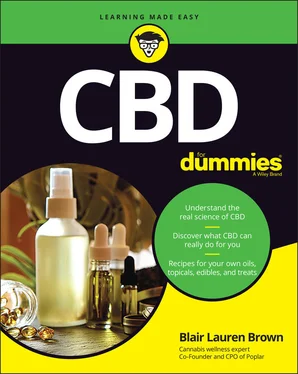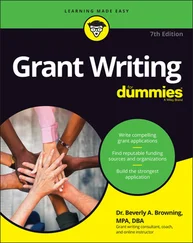I’ve made a few assumptions about you as I’ve written this book:
You want to try CBD and are curious about alternative medicines. You know that you prefer a more naturopathic approach to wellness and are hoping to transition from traditional pills and potions to a more holistic solution.
You recognize that CBD is a huge industry with many different opinions and options on how to get started. You’re willing to take the time to tailor your CBD treatment method to your lifestyle and other unique points of consideration.
You’re willing to form your own opinions, using diligent research and soliciting credible consultations. You know that the only expert on your body is you and accept that no rules apply everywhere without exception.
You realize that all that glitters isn’t gold. You recognize that, as in any industry, some CBD companies are more reputable or trustworthy than others.
Throughout the book, I use a handful of icons to point out various types of information. Here’s what they are and what they mean:
 Think of this icon as the little star you may draw next to important items on your grocery list. It marks areas that are great reference points to commit to memory.
Think of this icon as the little star you may draw next to important items on your grocery list. It marks areas that are great reference points to commit to memory.
 This icon points out tidbits of information that are interesting but not essential. If you’re in a hurry or into speed-reading, you can skip paragraphs marked with this icon and still be just fine.
This icon points out tidbits of information that are interesting but not essential. If you’re in a hurry or into speed-reading, you can skip paragraphs marked with this icon and still be just fine.
 The Tip icon is for actionable blurbs of advice and sometimes brand or product recommendations.
The Tip icon is for actionable blurbs of advice and sometimes brand or product recommendations.
 This one is essentially a “Slippery When Wet” road sign. Use this icon to avoid unnecessary pitfalls.
This one is essentially a “Slippery When Wet” road sign. Use this icon to avoid unnecessary pitfalls.
The Cheat Sheet is an awesome way to explore bite-sized information on some of the most important points about getting acquainted with CBD. This little freebie is definitely worth a gander.
To access this Cheat Sheet, simply go to www.dummies.com and search for “CBD For Dummies Cheat Sheet.”
The great thing about this book is that you can start anywhere. Just mosey on over to the table of contents or index to identify your topic of interest and begin reading.
If you’re not quite sure what CBD is and why it may positively impact your body in a supplementary form, Chapters 2and 3give you a complete overview of CBD and what its functions are.
On the other hand, if you feel like you want to get a sense of how to find the right delivery method for you, go straight to Chapter 7.
On the other hand (you’ve got three hands, right?), if you want to get started whipping up some customized recipes, your best bet is to visit Part 4.
Whatever the case, please approach the book with a sense of open-mindedness and enjoyment. Remember, you’re here to have fun and to get great information. It’s go time!
Part 1
IN THIS PART …
Beef up your CBD knowledge, vocabulary, and technique.
Define CBD and become familiar with the different parts of the hemp plant.
Dig into the four pillars of CBD relief and the pros and cons of CBD supplementation.
Investigate the different layers of CBD extraction and the different products it can yield.
Chapter 1
Updating Attitudes toward Cannabis and CBD
IN THIS CHAPTER
 Separating CBD fact from fiction
Separating CBD fact from fiction
 Trying out a couple of treatment methods
Trying out a couple of treatment methods
 Recognizing some of CBD’s medical benefits
Recognizing some of CBD’s medical benefits
 Understanding the history and future of CBD laws and acceptance
Understanding the history and future of CBD laws and acceptance
CBD is one of hundreds of naturally occurring chemical compounds in the cannabis plant. Because that plant has long had a sordid history in the Western world, CBD carries a perception of danger and illicit behavior. The reality is that CBD offers many potential therapeutic benefits in and of itself without the inebriating, or “high,” effects that give cannabis its reputation.
The everyday consumer and even some of the canna-curious find themselves butting up against myths that are a function of the times. In this chapter, I unpack the differences between the different types of cannabis and how CBD got its (not entirely fair) reputation. I also delve into its practical uses and medical benefits, as well as legality issues surrounding CBD. After reading this chapter, you’ll become a pro at separating CBD rumors from realities. (For a deeper dive into what CBD actually is, flip to Chapter 2.)
Debunking Myths about CBD
The list of rumors and myths about CBD is long because the cannabis plant is new in Western applications and the research is young. You may have heard that CBD is illegal because it comes from the cannabis plant. Or perhaps you’ve heard that it comes from hemp, but you’re only familiar with hemp as a source of fabric. You may have heard that CBD is a snake oil, made popular only by the placebo effect. On the other hand, maybe you’ve been told that CBD really can cure it all.
Table 1-1provides a quick overview of some common myths surrounding CBD as well as the actual facts. In the following sections, I talk about some of these myths in more detail.
TABLE 1-1Separating Common CBD Fact from Fiction
| Fiction |
Fact |
| CBD is a Schedule 1 narcotic drug, so there is no research. |
Formal, government-sanctioned research, as well as a host of anecdotal evidence, does exist. It is also “descheduled.” |
| CBD is snake oil and a scam. |
CBD has plenty of legitimate applications. |
| CBD as an industry is chock-full of discrepancies and is thus unsafe. |
CBD hasn’t been shown to physically harm anyone. |
| CBD can cure anything. |
CBD has been shown to help some conditions; like anything, results vary. |
The myth of all myths is that CBD can cure anything. Cure is a word you don’t often hear in any kind of medicine because it implies that whatever caused the symptoms is no longer there. That’s a hard threshold to reach. Results inevitably vary from body to body, so claiming a cure is difficult. Anecdotal evidence and the FDA’s new approved CBD anti-seizure medicine, Epidiolex, indicate that CBD has provided a lot of relief to a diverse group of people. And as a recognized figure in the space, I have heard of plenty of successful applications of CBD across individuals and with companies developing products.
Читать дальше

 Think of this icon as the little star you may draw next to important items on your grocery list. It marks areas that are great reference points to commit to memory.
Think of this icon as the little star you may draw next to important items on your grocery list. It marks areas that are great reference points to commit to memory. This icon points out tidbits of information that are interesting but not essential. If you’re in a hurry or into speed-reading, you can skip paragraphs marked with this icon and still be just fine.
This icon points out tidbits of information that are interesting but not essential. If you’re in a hurry or into speed-reading, you can skip paragraphs marked with this icon and still be just fine. The Tip icon is for actionable blurbs of advice and sometimes brand or product recommendations.
The Tip icon is for actionable blurbs of advice and sometimes brand or product recommendations. This one is essentially a “Slippery When Wet” road sign. Use this icon to avoid unnecessary pitfalls.
This one is essentially a “Slippery When Wet” road sign. Use this icon to avoid unnecessary pitfalls. Separating CBD fact from fiction
Separating CBD fact from fiction










